Ecosystem, Habitat, Range and Distribution are key concepts that help us to identify a bird species. .
Ecosystem is the type of environment shared by a variety of flora and fauna, for instance temperate woodland, tropical savanna, mangrove swamp and coastal dunes. The term Habitat is used to describe the relationship between a particular species and the immediate enviroment it inhabits. For instance, a bird species' ecosystem may be labelled tropical forest. Its habitat might be the forest canopy where it forages for fruit and insects and nests in tree cavities at least ten metres above the ground. ( Chapter 4 looks in detail at these environments and the birds that have adapted to living in them)
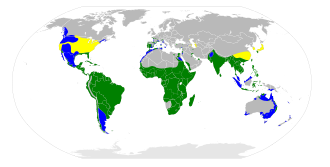
Range is the geographic dispersal of the species. Some species are found only within one region or even within one local area. Others range across the planet. For instance,some migratory birds travel thousands of miles each year from their winter quarters to their breeding grounds and make the return journey in the autumn. Identifying a species may be linked directly to both the location and the time of the year.
Range Map (Cattle Egret) Yellow: breeding; Blue: non-breeding; Green: year round
Distribution explores where within the range a species can be found and can be closely linked to ecosystem. A species may have a range that stretches across continents but will be found in one type of ecosystem such as mountainous terrain or dense forest. They may even be restricted to a few specific localities.
The following 5 case studies provide examples of how Ecosystem, habitat, range and distribution can aid or even enable the identification of bird species.
Case Study 1
Egrets:how ecosystem may aid identification
There are several species of egret. They are all white waders with long legs, distinctive bent neck profiles in flight. Several species have yellow bills, although colour can vary over the lifetime of the birds.

Little Egret Cattle Egret Intermediate Egret Great Egret
They differ in size and to some extend body shape, and in beak length but separating them is challenging particularly from a distance. Also they frequently have a similar range so often coexist in the same geographical regions. However, all but one species choose a habitat on or close to water where their long legs and beaks equip them to hunt aquatic animals.If you spot an egret away from water, in a field and close to grazing livestock, you can be fairly sure it is a cattle egret.
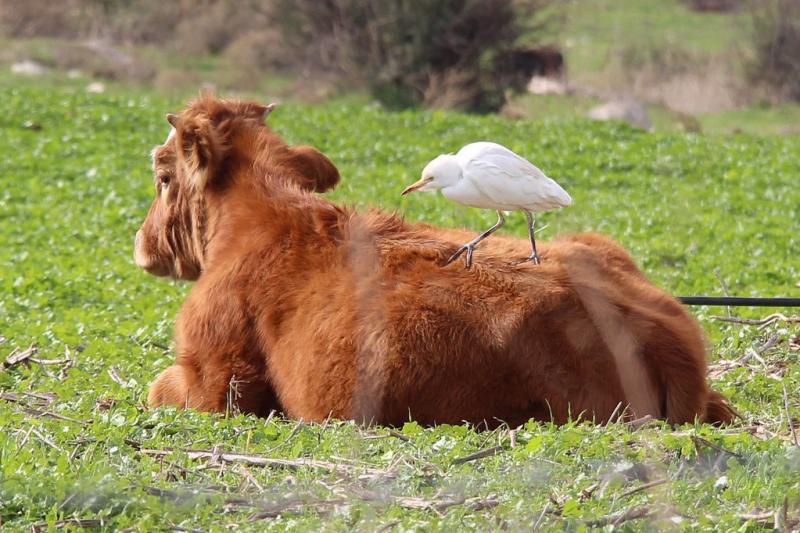
Cattle Egret (non-breeding or eclipse plumage)
The cattle egret has the widest range amongst a family of great travellers (see range map above). Originating on the African veldt, it has colonised much of the planet particularly in the last 120 years. Its success is directly linked to the spread of domestic animal rearing, particularly cattle. Tthey have evolved to forage ground disturbed by large mammals, and to eat parasites from their hides: a symbiotic relationship with obvious benefits to both bird and mammal.
In the natural world, animal behaviour is seldom straight forward. Although the cattle egret rarely gets its feet wet, it does not avoid water. Cattle egrets retain the family interest in wetlands and in the breeding season nest in trees close to water like other egrets. They are colonial nesters and may share a colony with herons, other egret species, cormorant and ibises. Fortunately, the orange breeding plumage is unique to cattle egrets and they stand out in a mixed flock. So, according to season, look for an all white cattle egret or one with a rust coloured mane.
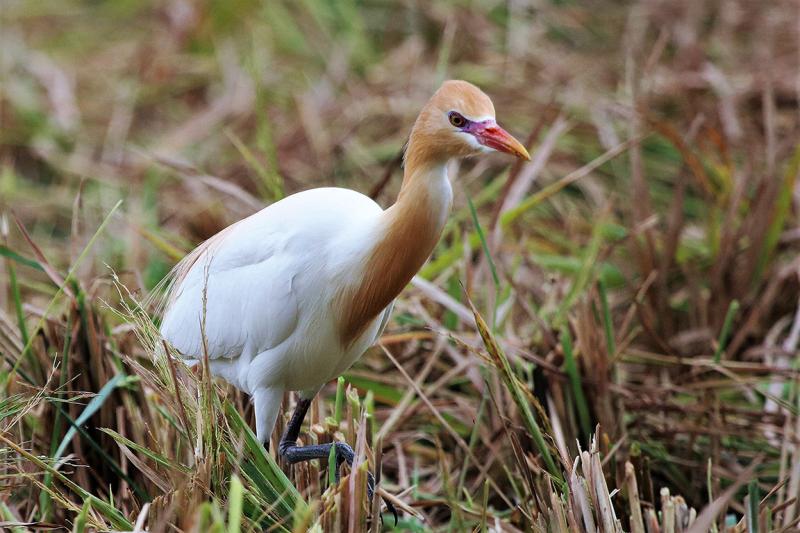
Cattle Egret (breeding plumage)
Case Study 2
Tawny and Steppe Eagles: how seasonal migration aids identification
Species that migrate annually are in different locations depending on the time of the year. Checking on the status of a species with regards to migration may offers a useful clue to identity.

Tawny Eagle, Kruger National Park
When I photographed the eagle above in Kruger National Park, South Africa, I was uncertain whether it was a tawny eagle or a steppe eagle.. They are similar in behaviour, size and plumage although the steppe eagle tends to be a darker brown. Actually, identification turned out ot be quite straightforward. It was July and the the steppe eagle migrates north to breed in central Asia in the northern summer months. It could only be a tawny eagle.
Case Study 3
Lewin's Honeyeater: how range can enable identification
There are three honeyeaters similar in appearance resident in Queensland, Australia. They are medium-sized, olive-grey and share the typical curved honeyeater beaks.

Graceful honeyeater Lewin's honeyeater: Yellow-spotted Honeyeater
However, yellow-spotted honeyeaters have an oval, yellow cheek patch. Graceful honeyeaters have a circular cheek patch. Lewin's honeyeater has a crescent-shaped cheek patch. There are also slight differences in size, eye colour and the calls of the three birds. I couldn't decide which of the three species I had photographed even after comparing the shapes of the yellow cheek patches. But then I looked on ebird at the range map for each of the species. Only Lewin's honeyeater could be found as far south as Toowoomba where I photographed my honeyeater.
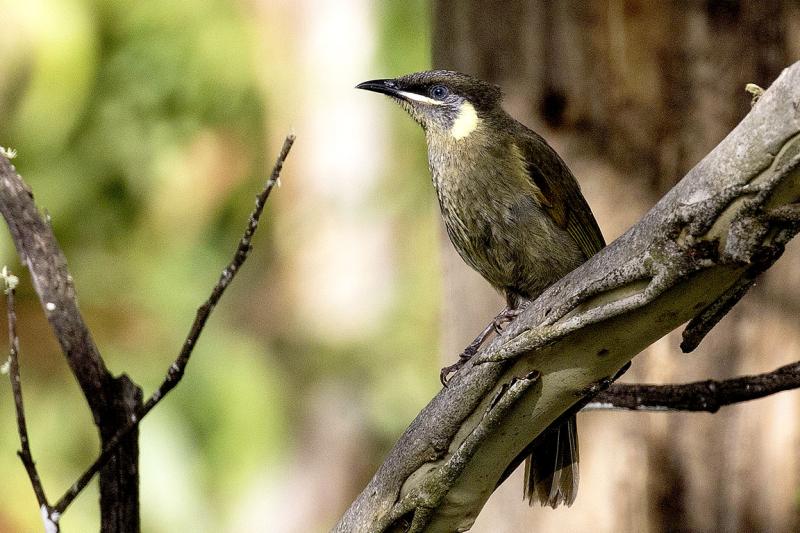
Lewin's Honeyeater, Toowoomba
So, identity established. If I go further north, I shall have to use other diagnostic features to identify the honeyeaters I observe or photograph as the three species coexist in the tropical rainforests of northern Queensland.
Case Study 4
The Little Raven: how distribution aids identification
Australia is also the country of our next case study,
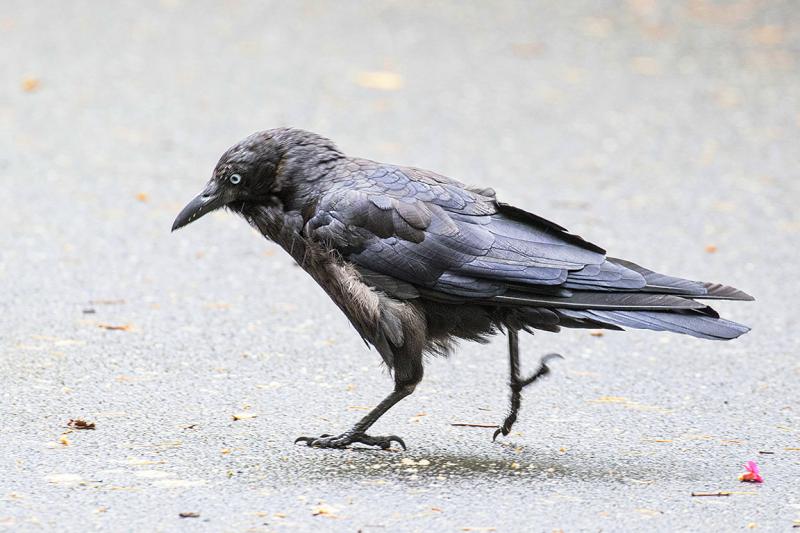
Little Raven
I photographed this corvid in Melbourn Botanic Gardens, Victoria Australia. Australian corvids are very difficult to distinguish and their calls are often the easiest way to identify them. In the Australian state of Victoria, Australia ravens and little ravens are common but distribution is uneven. Crows are only found in the North West corner of Victoria. Authorities agree that if you encounter a covid in Melbourne it is probably a little raven. Without this information, I would not have been able to identify the corvid above. The greyish breast plumage is not typical of a little raven and the beak seems less bulky than usual. These are characteristics associated with a juvenile little raven. Range and distribution enabled a fairly definite identification.
Case Study 5
The Bali Myns: Using knowledge of range, distribution and habitat to locate a species.
The Bali myna is one of the rarest birds in the world and the only bird endemic (unique) to Bali in Indonesia. It is classified as "critically endangered" by the IUCN.

Bali Myna
A quick check on Wikipedia revealed that North West Bali National Park was one of the few locations where the bird still survived. I also discovered it was an arboreal species landing on the ground only to drink and to collect nesting material. I located a local guide and following a dawn start, a long drive and a moderate woodland hike, we found the bird above and its mate. Researching the range and distribution of the Bali myna enabled this sighting and photo opportunity.
CC BY 2.0 Graceful Honeyeater: James Niland Yellow-spotted honeyeater: Dan Ambrust